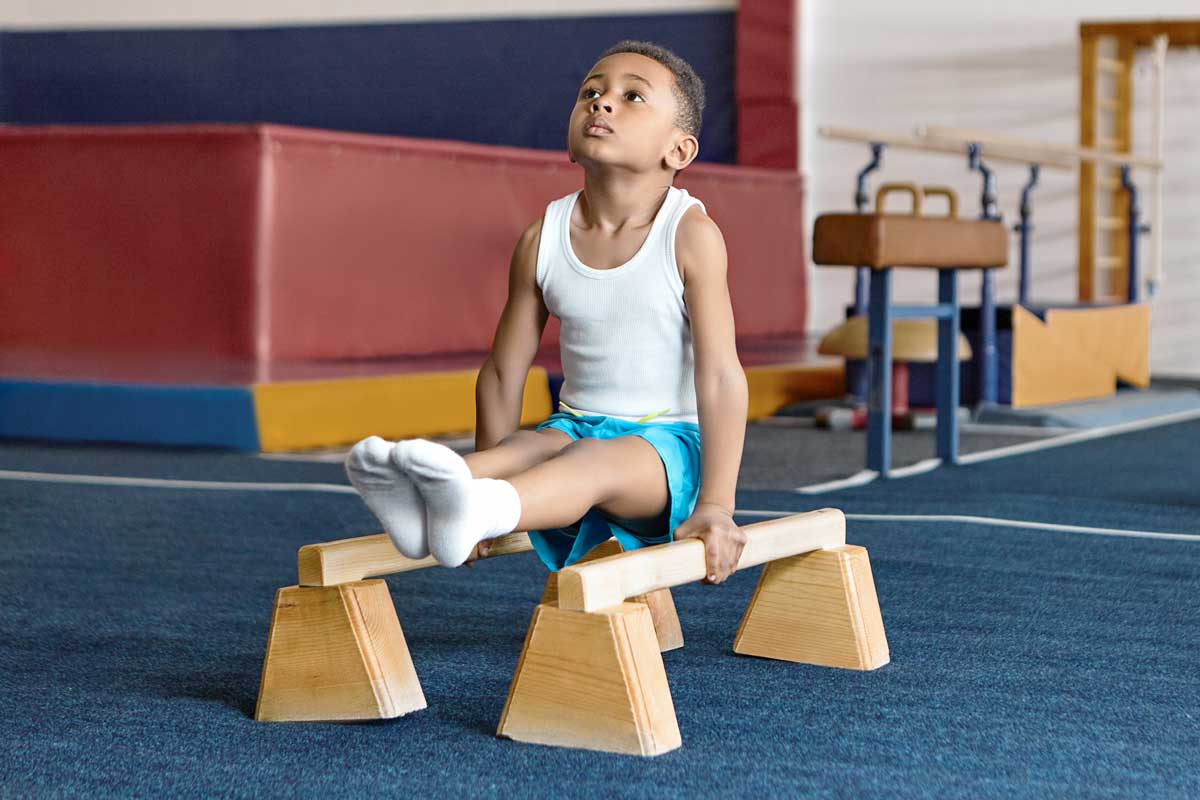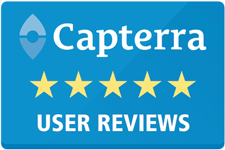Maintaining Effective Communication Between Parents and Gymnastics Gyms

Gymnastic gym students are usually 18 years old and under. Strength and flexibility are needed to be a successful gymnast, and training at an early age can be an advantage. When it comes to training minors, gym owners will be communicating primarily with the students that are training and the parents who signed them up.
You probably talk to students occasionally during their training sessions, but it is the parents who you want to get in touch with about the nature of the membership. Getting the parents involved with their kid’s progression in gymnastics is important to build a strong community of gymnasts.
In this article, you will learn the different ways to communicate with parents and how effective communication can be used as a tool for a student’s growth in your gym.
The Importance of Effective Communication
Effective communication between you and your students’ parents is of utmost importance. Parents are entrusting you with their most precious gift when their children are in your care. For that reason, effective communication between parents and gym owners cultivates a positive environment for trust and member growth. It promotes a shared commitment towards the success and well-being of each gymnast, ultimately enhancing the overall experience within your gymnastics gym.
Member Retention
Effective communication builds trust and confidence in your gym’s ability to nurture the gymnastic skills of each student. The more a parent sees that their child is having fun and excelling in gymnastics, the more they are likely to remain members.
Parents who are well-informed about their child’s practice schedules, performance, and evaluations will know their money is not being wasted, but that usually isn’t their main motivator. Parents will keep their child in your program because you are helping them become a better person through training, instilling discipline, and even helping them make new friends.
Address Concerns
Effective communication allows gym owners to address any concerns or questions raised by parents promptly, creating an environment that welcomes open dialogue; where both parties can discuss and resolve issues together. This fosters a sense of support and collaboration, where parents feel valued and heard.
Additionally, effective communication enables gym owners to convey important policies, safety guidelines, and upcoming events to parents. This ensures that parents are aware of any important information and can actively take part in their child’s gymnastics journey.
Establish Open Lines of Communication
Open lines of communication make parents trust you and your gym more. For starters, having active contact avenues such as email, phone, and social media channels encourages parents to communicate more with your gym. You should also reach out to the parents consistently.
Regular Updates
Maintain regular communication channels such as a weekly or monthly newsletter, email updates, or a dedicated section on your gym’s website. Share important information, upcoming events, competition schedules, and any changes to training sessions. This ensures parents stay informed and feel involved in their child’s gymnastics development.
Parent Meetings
Parent meetings keep them abreast of upcoming updates in your gym and give them an opportunity to voice concerns, give praise, or discuss their kid’s progress. These meetings can be conducted in person or virtually, providing a means for open dialogue and feedback. Consider rotating meeting times to accommodate different schedules to ensure maximum participation.
Individual Conferences
An individual conference is a session where the teacher, parents, and gymnast can discuss development and progress. By allocating this time, you are establishing trust and building community.
Social Events
Social events such as parent-child fun days, gym showcases, or team-building activities can help to foster a welcoming environment. With these events, not only do you create an open line of communication with the parents, but you also create an atmosphere where parents can talk and develop friendships of their own.
Suggestion Box or Feedback Form
A suggestion box is one of the oldest ways to obtain suggestions. You can set one up to collect anonymous suggestions, ideas, or feedback. This promotes an environment of openness and gives you the opportunity to address concerns or implement improvements. You can also send forms through email to request input from parents.
Gym Policies
Communicating gym policies provides key information to the parents about how your gym operates. This gives the parents assurance that you have a set of enforceable rules that will keep their children in a safe, neat, and orderly space.
Gym Handbook
A gym handbook outlines all the essential policies, rules, and expectations of your gymnastics facility. Include information about safety protocols, code of conduct, attendance requirements, tuition fees, competition guidelines, and any other relevant details. If you can’t provide a handbook, a copy of your gym’s code of conduct will suffice.
Your handbook doesn’t have to be printed. To cut down on costs — and environmental impact — simply email a digital copy of the handbook after the completion of the sign-up process. Along with this handbook, you can also provide a welcome packet highlighting important policies, rules, and expectations.
Visual Aids
Utilize visual aids such as posters, infographics, or instructional videos to reinforce important policies and expectations. Visual representations can be particularly helpful for parents and students who are visual learners, which can enhance their understanding of the information provided. These visual aids can be sent by email as well. But if you want to instill these regulations in your gym, visual aids are strongly recommended.
Clear Communication Channels
Gym rules and regulations may need to be updated. In those instances, the best way to inform parents and students of these changes is to send them an email or text message. You can also communicate these updates during individual conferences, parent meetings, or social events.
Address Concerns and Challenges
Maintaining a gym is not always sunshine and rainbows. Sometimes, parents have genuine concerns. This can come in the form of a minor attendance issue or a bigger conflict. Despite the nature of the concern, effective communication is paramount.
Effective communication in your gymnastics facility is not just about keeping parents informed of their children’s activities in your gym. Sometimes, it involves conflict resolution and addressing challenges. Create a system to address concerns and employ active problem-solving and conflict resolution techniques.
Open Door Policy
An open-door policy encourages parents to communicate their concerns. Make it clear that you are accessible and approachable, whether in person, by phone, or through email. Make your gym welcoming and actively listen to any concerns that may arise.
When parents are expressing their concerns, give them your full attention and show empathy towards their perspective. This shows that you value their input and are genuinely interested in resolving the issue. And when responding, use a respectful and professional tone to create a safe space for open dialogue. If ever a parent expresses their concern aggressively, avoid being defensive and confrontational. Instead, remain calm and seek to understand their concerns.
Swift Responses and Problem Solving
Once you identify the parent’s concern, the next step is to provide solutions. If you need time to investigate a certain concern, tell the parent directly and thank them for sharing. Letting parents know their concerns are being taken seriously and that you are actively working on a solution goes a long way in building trust. Analyze the issue objectively, gather all relevant information, and find potential solutions. Involve the parent in the process to find a resolution that satisfies all parties involved.
Mediation and Conflict Resolution
If two (or more) parents are involved in a certain situation, consider the involvement of a neutral mediator to facilitate a constructive conversation and guide the conflict resolution process. Certain situations include quarrelling kids, which subsequently includes their parents as well. When this happens, a trained mediator can help navigate difficult conversations and find common ground. This is an ideal time for a conference between all the parents involved to have a civilized discussion and address the situation with you at the center.
Follow up
Once a concern is resolved, follow up with the parent(s) to ensure their satisfaction. This step reinforces your commitment to resolving concerns and maintaining open lines of communication that often lead to member growth gymnastics gyms are aiming for.
Share Progress and Achievements
Parents who are aware of their child’s progress are more likely to keep them engaged at your gym. You, as the gym owner, can monitor, document, and share these achievements with the parents and students.
Track Student Progress
You can’t share progress you don’t have. The first step is to track and archive your students’ achievements. This way, you have a benchmark from which to track progress made in terms of strength, shapes, spots, mastery of moves, and the like.
To track your student’s progress, collect the following data points for each student:
- Skill proficiency charts for different levels and disciplines
- Progress reports for each student, highlighting their achievements, areas of improvement, and future goals
- Tracking sheets for individual skills or routines to record the date when a skill was first attempted, achieved, and consistently executed
- Physical fitness tracker that assesses strength, flexibility, endurance, and agility
There are other ways to track your students’ progress such as skill evaluations, performance assessments, and video analyses. But the records above are imperative because they are the records most parents can easily track and comprehend. Plus, they can be distributed digitally through different online platforms with ease.
Share Progress
Once you have student records you can share, create a screenshot of each and send them to each parent by email. Be sure to explain each achievement.
Another way to share your students’ achievements is through social events and parent meetings. During these meetings, you can discuss the gymnasts’ progress in more depth and encourage them to advocate for their child’s success.
And if you want to share a student’s achievement with the whole gym, you can do so by email or social media. Utilize online communication platforms or apps specifically designed for sharing information with parents. These platforms allow for instant updates, notifications, and seamless communication between gym owners, coaches, and parents.
Training and Education for Effective Communication
To improve communication within your gymnastics gym, it’s essential to invest in training and education for your teachers and employees. With proper training, every gym staff member can become a better communicator.
Communication Workshops and Seminars
Communication workshops and seminars give your staff members the opportunity to learn effective communication techniques that can be used whenever there is conflict or to effectively deliver a message to parents.
Bring in communication experts to conduct seminars, interactive sessions, role-playing scenarios, and other exercises that teach active listening, empathy, and conflict resolution. Provide constructive feedback and guidance to help refine their techniques.
Supply Learning Resources
Seminars are a great way for your employees to learn effective communication. But sometimes, they tend to forget their learnings or need supplementary materials. Some resources you can provide are books, articles, and online courses that focus on communication skills.
Encourage your team to explore these materials and continue pursuing effective communication by attending webinars and specialized courses. Provide financial assistance or time off to support their professional development in communication.
Feedback and Evaluation
Regularly evaluate communication skills and provide constructive feedback to staff members. This can be done through performance reviews, observation sessions, or anonymous surveys. Offer support and guidance for areas that need improvement and recognize and reinforce effective communication practices.
Utilize Technology
Today, the most effective way to communicate with your students’ parents is through email, text messages, and social media. Utilize a multi-channeled approach to reach your audience wherever they are.
There are, however, pros and cons to each communication platform:
Pros:
- Professional and formal mode of communication
- Ideal for detailed, lengthy messages
- Provides the opportunity to attach important documents, schedules, or newsletters
- Can be easily organized and archived for future reference
- Enables communication with multiple recipients simultaneously
- Suitable for sharing announcements, policy updates, and important reminders
- Low-cost method for reaching large audiences with analytics and performance tracking
Cons:
- Emails may go unnoticed or end up in spam folders
- Response time may vary, as parents may not regularly check their emails
- Long emails may be overwhelming and less likely to be read in their entirety
- Lack of immediate response or real-time interaction
- Potential for misinterpretation or miscommunication due to the absence of non-verbal cues
Social Media
Pros:
- Wide reach, as many parents actively use social media platforms
- Allows for quick updates, announcements, and reminders in real-time
- Engage parents through interactive content, such as photos, videos, and stories
- Facilitates community-building among parents and students
- Enables direct messaging for personalized communication
- Provides opportunities for parents to share their child’s achievements and experiences
- No cost, mass-communication platform with engagement metrics
Cons:
- Information shared on social media may get lost in the fast-paced timeline
- Privacy concerns and the need for maintaining appropriate boundaries
- Limited control over who sees the posts, as social media platforms rely on algorithms
- Potential distractions from unrelated content or notifications
- Difficult to convey lengthy or detailed messages effectively
- Not all parents may be active or present on the chosen social media platforms
Text Messaging
Pros:
- Immediate and direct mode of communication
- High open and read rates, as text messages are typically checked promptly
- Short and concise messages can quickly convey important information
- Ideal for urgent announcements, schedule changes, or reminders
- Enables one-on-one communication and quick responses
- Can be used for personalized updates or individual inquiries
- Relative low-cost method for reaching large audiences with analytics and performance tracking
Cons:
- Limited space for detailed or lengthy messages
- Potential for misinterpretation due to the absence of tone and non-verbal cues
- May be intrusive if used excessively or outside of reasonable hours
- Not all parents have unlimited text messaging plans
- Difficult to manage group communication or reach multiple recipients simultaneously
- May not be suitable for sharing visual content or attachments
By stating the pros and cons of each communication platform, we are not saying that you should choose one over the others. Instead, utilize all platforms for the best overall reach.
For instance, use email for announcements and information that must be conveyed professionally. Social media is best used for public relations and promotional content for member growth, retention, and general awareness. Lastly, text messages are best for short, personal messages to a parent.
Gymnastics Gym Software
Communicating with the parents of your gymnasts can be challenging, especially when you must message them all at once.
Many gym owners still pull up a list of parents’ emails, type each one, construct the message, then hit send. But what if they need to remind parents that their bill is almost due? Would they send a separate email to each parent? To tackle tasks like these, invest in a gymnastics gym software to streamline administrative tasks. That way, you can focus more on connecting with parents and building a community with your gym at the core. Most gymnastics gym software only has capabilities for administrative tasks. Zen Planner, however, goes the extra mile.
How Does Zen Planner Help?
Zen Planner is a gymnastics gym software that helps you accomplish administrative tasks so you can focus on building relationships in your gym.
Zen Planner Features:
- Reporting dashboard
- Simplified billing
- Integrated payment processing
- Class and program scheduling
- Attendance tracking
- Advanced workout tracking
- Retail store
- Marketing tools and web design
- Member self-service
Zen Planner has all these amazing features, but unlike other gymnastics gym software, Zen Planner also has tools to communicate with your students’ parents.
Automated Emails
Zen Planner’s gymnastics software has an automated email feature that allows gym owners to send mass emails to parents in real-time without having to manually enter email addresses. All you have to do is construct a message, select the recipients on your database with a click, and schedule your email.
Let’s say you have 100 students in your gym and you want to connect with their parents on a more personal level. One way of doing this is by sending them an email on their birthdays or anniversaries. Instead of painstakingly trying to track each of their birthdays and contact them manually, you can write an email for certain events as a template and Zen Planner will automatically send them to the appropriate recipients at the right time.
Customer Retention
Automated emails also help you nurture relationships with parents who signed their kids up for an intro class at your gymnastics gym. With Zen Planner, you can contact each parent immediately after their kid completes their introductory session. Once you get a reply, the conversation can start from there and ultimately end in new memberships.
Zen Planner’s automated attendance tracker knows which kids have been missing classes, so you don’t have to manually track them on spreadsheets. The software then sends them an automated email that encourages them to return to your gym, an excellent technique for lead retention.
Skill Progression and Tracking
As mentioned earlier, sharing the progression of a gymnast’s skill with their parents is an important step in the quest to maintain effective communication. Because of this, Zen Planner’s gymnastics gym software has an integrated skill progression tracker that allows you to effortlessly record test results from any device and send them to their parents. With our integrated tracker, parents can stay up to date on their kid’s history, progress, and potential by email or the Zen Planner member app. With the app, members can log their workouts and track their progress on your leaderboard.
Effective communication between gym owners and parents is crucial for the success and growth of gymnasts in your gym. By establishing open lines of communication, addressing concerns, sharing progress and achievements, and investing in training and education, you can build a strong and supportive community that benefits you, your gymnasts, and their parents.
And by incorporating Zen Planner’s gymnastics gym software, you can enhance your communication efforts, establish a strong connection with parents, and create a positive and engaging environment for your gymnasts.

I’m Coach Kelli, a devoted CrossFit gym owner with 15 years of experience managing my facility, along with owning yoga studios and wellness centers. Beyond the fitness world, I have a passion for cooking, cherish moments with my children and family, and find joy in spending time outside. Having experienced the highs and lows, I’m dedicated to leveraging my expertise to help you grow and succeed on your fitness journey.

I’m Coach Kelli, a devoted CrossFit gym owner with 15 years of experience managing my facility, along with owning yoga studios and wellness centers. Beyond the fitness world, I have a passion for cooking, cherish moments with my children and family, and find joy in spending time outside. Having experienced the highs and lows, I’m dedicated to leveraging my expertise to help you grow and succeed on your fitness journey.







